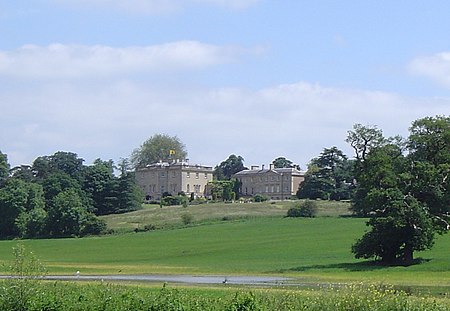Nuneham House
Buildings by Stiff LeadbetterCountry houses in OxfordshireGrade II* listed buildings in OxfordshireGrade II* listed housesGrade I listed parks and gardens in Oxfordshire ... and 2 more
Houses completed in 1756South Oxfordshire District

Nuneham House is an eighteenth century villa in the Palladian style, set in parkland at Nuneham Courtenay in Oxfordshire, England. It is currently owned by Oxford University and is used as a retreat centre by the Brahma Kumaris World Spiritual University. In September 2016 the house and a thousand acres of surrounding parkland and farmland, including the village of Nuneham Courtenay, were put up for sale in three separate lots for a total of £22 million.
Excerpt from the Wikipedia article Nuneham House (License: CC BY-SA 3.0, Authors, Images).Nuneham House
Lower Radley, Vale of White Horse
Geographical coordinates (GPS) Address Nearby Places Show on map
Geographical coordinates (GPS)
| Latitude | Longitude |
|---|---|
| N 51.67818 ° | E -1.22041 ° |
Address
Old All Saints Church
Lower Radley
OX14 3AY Vale of White Horse
England, United Kingdom
Open on Google Maps







